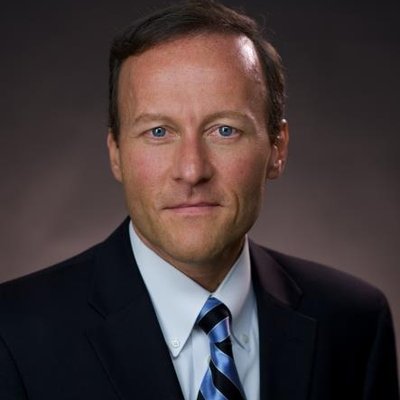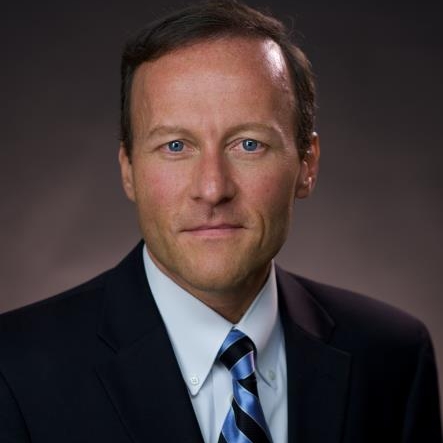
Head of Loss Control
Munich Re Specialty Insurance
While many industries are facing labor shortages, healthcare may be feeling the effects most acutely. The already growing shortage of healthcare workers was greatly exacerbated by the COVID-19 pandemic, which put immense strain on all healthcare organizations and continues to have ripple effects.
Analyzing the root causes of labor shortages and the associated risks is essential to a strong risk management strategy.
What are the causes of today’s healthcare labor shortage?
Baby Boomers joining Medicare every day¹
Healthcare workers feeling symptoms of burnout³
Turned away by nursing schools due to lack of qualified faculty in 2019-2020¹
1. Aging populations: 10,000 Baby Boomers are joining Medicare every day, adding to the burden of an already overextended system.1 The U.S. Census Bureau predicts that over one-fifth (21%) of the U.S. population will be aged 65 or older by 2030, meaning more Americans with chronic illnesses and conditions such as diabetes, heart disease, and dementia who need care.2
2. Worker burnout: The COVID-19 pandemic saw healthcare workers at all levels put under great physical and mental duress. According to a 2022 article in the New England Journal of Medicine, more than half of healthcare workers are feeling the symptoms of burnout, and many are experiencing related mental health challenges including insomnia, depression, anxiety, and PTSD.3 It’s also a top reason for leaving the profession among nurses, along with seeking new opportunities and better work-life balance.4
3. Lack of pipeline: Quite simply, not enough people are choosing to enter the healthcare profession. The pipeline problem is compounded by the shortage of nursing educators: in 2019-2020, nursing schools turned away over 80,000 people due to the lack of qualified faculty, according to the American Association of Colleges of Nursing.1 And it’s not just nurses: the United States would need an estimated 3.2 million additional healthcare workers besides doctors and nurses in the next five years to meet demand.1

For healthcare organizations, proactively addressing staffing shortages is essential to risk management.
What are hospital and healthcare labor shortage risks?
- Poor resident/patient outcomes: High numbers of residents/patients per clinical staff has the potential to contribute to missed care and could lead to readmissions, infections, and otherwise poor resident/patient outcomes.
- Dangerous resident/patient care: Errors of omission aren’t the only threat posed by an overburdened workforce. Dangerous resident/patient care can also result, including misdiagnoses, medication errors, and failures to rescue.
- Accidents and lawsuits: An understaffed work environment is rife for accidents and injuries, as sleep-deprived workers perform repetitive, physically strenuous tasks without relief. What’s more, clinicians must contend with verbal and physical violence, often without adequate staff to assist or protect them. Not only are these incidents a liability in themselves, but they also increase workers’ feelings of burnout, further compounding the problem.
Why is risk mitigation important?
Risk management in healthcare: examples
1. Retaining current employees
Investing in employee wellbeing and providing paths for career advancement can make a significant difference in employee retention. Consider the following areas when developing a retention strategy.
- Conduct a financial benchmark study: Before making changes to your salary and benefits, understand how your current package stacks up against competitors.
- Conduct staff surveys and exit interviews: Just as important as benchmarking is understanding what your specific employees need from their jobs. Providing them with an anonymous arena to share their thoughts is essential for understanding where you can improve—both among current employees, and, perhaps even more importantly, those who choose to leave.
- Create a wellbeing diagnostic: Psychological evaluations are an important and often overlooked practice in healthcare. The American Hospital Association reports that 8 in 10 physicians believe there is a stigma around mental health care for physicians, and 4 in 10 are fearful of, or know a physician who is fearful of, seeking mental health care.3 Organizations can be proactive in removing this stigma, and in providing resources to help.
- Build a customized retention program: Salary and benefits are crucial, but they’re not the sole factors of employee satisfaction. Some workers may value flexible hours, breaks to recharge, input in decision-making, access to mental health and wellness resources, or support with elder or childcare.
- Establish career progression pathways to promote growth of clinical leaders within the organization. Where there is no clear path to promotion, your best and brightest are much more likely to leave the organization (or the healthcare industry altogether) in search of a role that offers them room to grow.
2. Resident/patient and worker safety
The second area to focus risk mitigation efforts is resident/patient safety, which includes understanding how labor shortages affect resident/patient outcomes, ensuring workers are rested and ready to work, and developing an overall culture of safety.
- Evaluate the effect of staffing on incidents and outcomes. First is understanding the correlation between liability incidents and poor resident/patient outcomes, and the staffing situation at the time.
- Embrace tech-enabled scheduling: Once you know how many staff you need to effectively reduce risk, technology can help greatly with workload mapping and scheduling. AI-enabled tech platforms are making it easier than ever to fairly allocate shifts and time off, adjusting in real time and dramatically reducing the scheduling time required.
- Address workplace violence: Healthcare workers are a staggering five times more likely to experience workplace violence than all other workers.5 Physical assault and verbal abuse from residents/patients and their families can result not only in bodily harm, but also in burnout, depression, PTSD, and faltering clinical care. Workplace violence training, increased security measures, “flagging” systems for aggressive residents or patients, and a zero-tolerance policy can all be part of an effective workplace violence program.
- Develop flexible action plans to deliver care during staffing shortages. Some healthcare organizations have found success with an internal “staffing” organization of clinicians who can be reassigned where needed. Care extenders can also be a good option for filling in labor gaps.
- Use Nurse Practitioners: During the pandemic, many hospitals found themselves leaning more on licensed nurse practitioners (NPs); their role will only continue to grow with changing state laws and value-based care models. In fact, the number of licensed NPs increased 12% in 2021. Consider the ways that your organization can use NPs and physician assistants to alleviate a physician shortage.7
3. Attracting new talent
Last but not least is developing a strategy to attract new talent, be it young jobseekers or seasoned workers from different industries. A multi-pronged approach tailored to specific sectors of the labor pool can help you successfully recruit.
- Speak to Millennials and Gen Z: Create a talent strategy that considers the wants and needs of younger talent, including the ability to tailor schedules and a clear path of career progression. Share your mission, your sustainability efforts, and the ways you promote and champion diversity and inclusion. To younger employees, culture is key.
- Promote diversity and inclusion: Diversity and inclusion starts at the top. Prioritize diversity in the board and C-suite and among physicians, and ask employees of diverse backgrounds to share their stories.
- Assign employees a career specialist coach and mentor: Assigning employees a mentor as soon as they join can help boost their sense of belonging, and show that you are investing in their careers.
- Emphasize your mission: Healthcare is a mission-driven industry. Emphasize the ways in which employees make a positive impact on people’s lives. Don’t hesitate to reach out to candidates with non-traditional backgrounds and/or job seekers who have dealt with layoffs from other industries.
Munich Re Specialty Insurance (MRSI) is a description for the insurance business operations of affiliated companies in the Munich Re Group that share a common directive to offer and deliver specialty property and casualty insurance products and services in North America.
For more information on MRSI, including licensing, regulatory-required, and other information on the operating companies, please click here.
Contact us

This may interest you
Our solutions
Newsletter
properties.trackTitle
properties.trackSubtitle